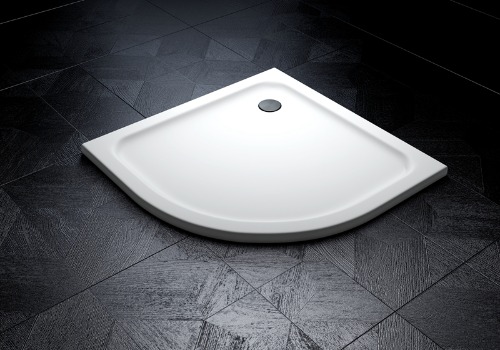Installing an ABS shower tray is a relatively straightforward process that can be done in a few steps. Here are the general steps to follow:
Prepare the area where you will be installing the shower tray. This may include removing any existing materials, such as tiles or flooring, and ensuring that the surface is level and free of debris.Place the shower tray in the desired location and mark the position of the waste outlet. This will be the area where the shower drain will be installed.Using a jigsaw or similar tool, cut a hole in the shower tray at the marked position for the waste outlet.Apply a layer of silicone sealant around the underside of the shower tray flange. This will help to create a watertight seal when the tray is installed.Position the shower tray in place and ensure that it is level. Use shims or similar materials to adjust the level if necessary.Secure the shower tray in place using screws or similar fixings. Make sure that the screws are flush with the surface of the tray and do not protrude through the other side.Connect the waste outlet to the shower drain. This may involve attaching a trap and connecting the pipe to the waste system.Apply a bead of silicone sealant around the edge of the shower tray where it meets the wall or floor. This will help to create a watertight seal and prevent water from leaking out.Install the shower enclosure or doors as per the manufacturer's instructions.Test the shower tray for leaks by filling it with water and checking for any signs of water escaping.
Overall, installing an ABS shower tray is a relatively simple process that can be done with basic DIY skills. Always refer to the manufacturer's instructions and follow any safety precautions when working with tools and materials.Besides,ABS (Acrylonitrile Butadiene Styrene) shower trays can be classified based on a few different criteria. Here are some common ways that ABS shower trays can be classified:
Size: ABS shower trays come in a range of sizes to fit different shower enclosures and spaces. They can be classified by their length, width, and height.Shape: ABS shower trays can come in a variety of shapes, including square, rectangular, and quadrant. The shape of the tray will depend on the design of the shower enclosure and the space available.Finish: ABS shower trays can come in different finishes, such as glossy or matte. The finish may affect the appearance and slip resistance of the tray.Installation Type: ABS shower trays can be classified by their installation type, such as surface-mounted or recessed. Surface-mounted trays sit on top of the floor, while recessed trays are installed into the floor to create a level entry.Waste Position: ABS shower trays can have different waste positions, such as central or offset. The waste position will affect the location of the shower drain and the plumbing required.Load Capacity: ABS shower trays can be classified by their load capacity, which is the weight that they can support without cracking or breaking. This may be important for larger or heavier users, or for those who prefer a sturdier shower tray.
Overall, the classification of ABS shower trays will depend on the specific features and characteristics of the product. When choosing an ABS shower tray, it is important to consider factors such as size, shape, finish, installation type, waste position, and load capacity to ensure that it meets your needs and requirements.




 English
English Deutsch
Deutsch
















